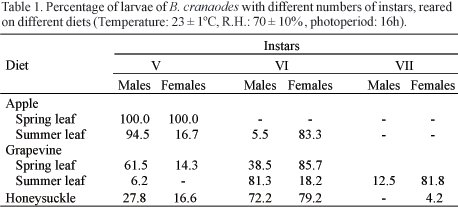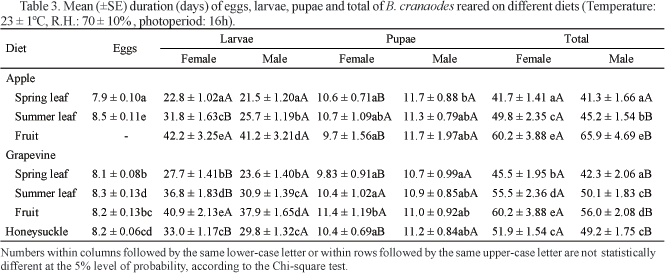The effect of seven natural diets on the development and reproduction of Bonagota cranaodes (Meyrick) was evaluated under laboratory conditions. The experiments were carried out at the temperature of 23 ± 1ºC, with 70 ± 10% of RH and a photoperiod of 16:8h (L:D). The larvae were reared on apple, grapevine and honeysuckle (Lonicera japonica). On the first two foods three types of diet were used: spring leaves, summer leaves and fruits. The number of instars varied from five to seven. The larvae reared on apple leaves had, in general, fewer instars than those reared on grapevine and honeysuckle leaves. The duration of larval development differed between diets. The larvae reared on spring apple leaves showed the shortest duration, and those on fruit the longest. The larvae survival was lower on fruit than on leaves, and on apples it was particularly low (17.8%). The female pupae reared on honeysuckle were heavier than those reared on the other diets. The cycle from the egg to the emergence of adults varied between 41 days on spring apple leaves and 60 days on apples. The females reared on honeysuckle and spring apple leaves were the most fecund, whereas the females on apples did not oviposit. Honeysuckle and spring leaves were the most suitable foods. Apples, on the other hand, were the least suitable diet, which leads one to think that larvae could hardly complete their whole cycle on this fruit.
Insecta; leafroller; diet; host plant; immature stage; reproductive biology







